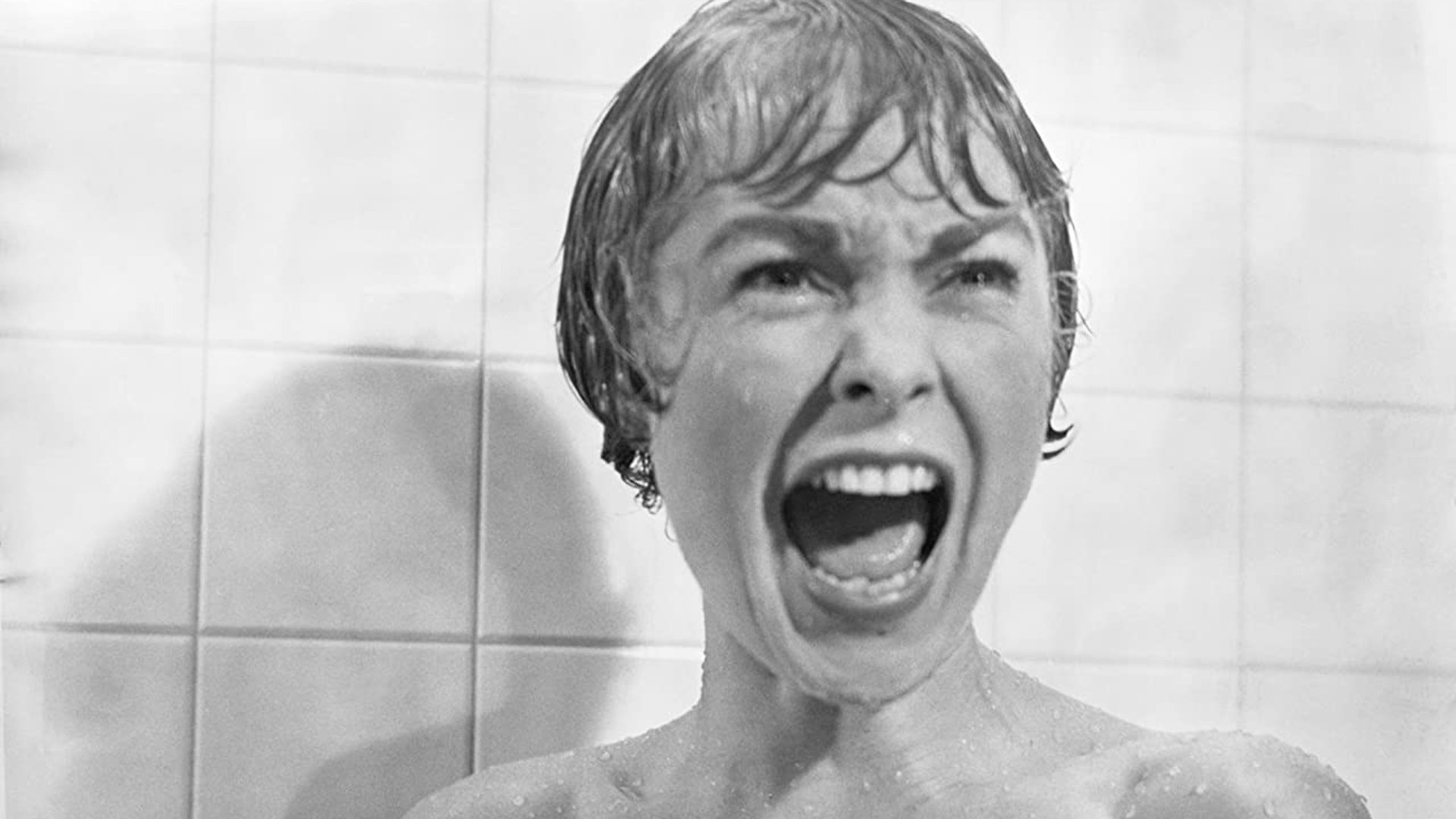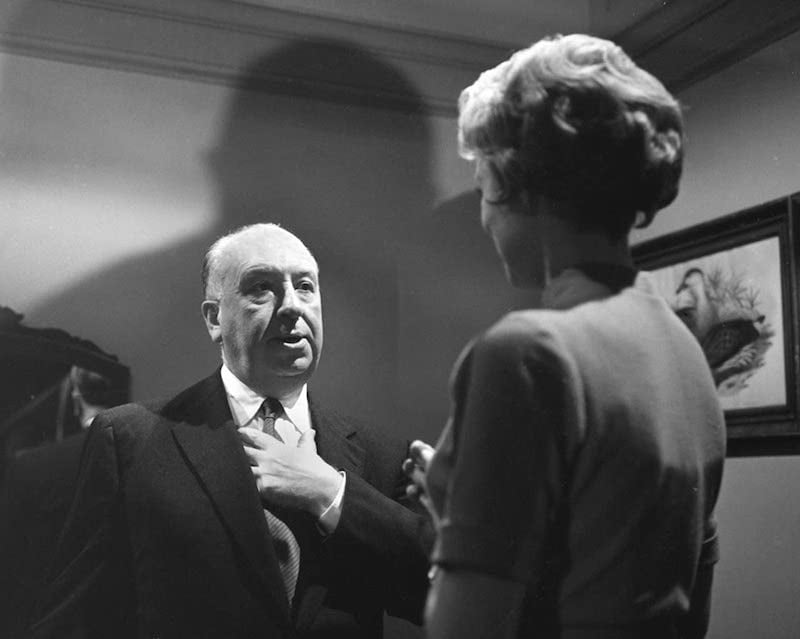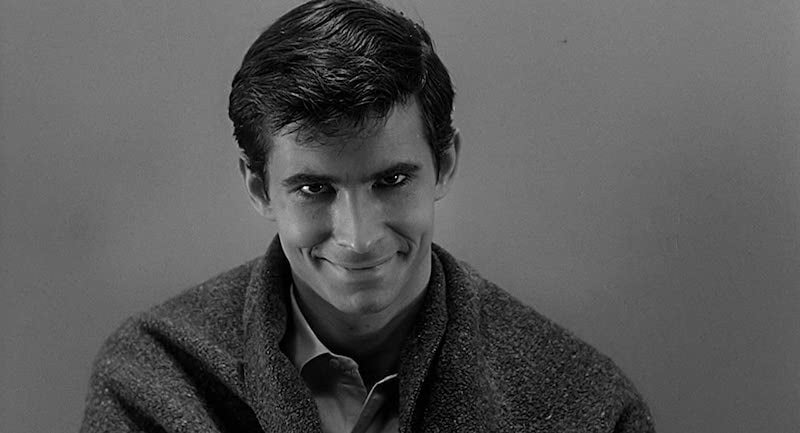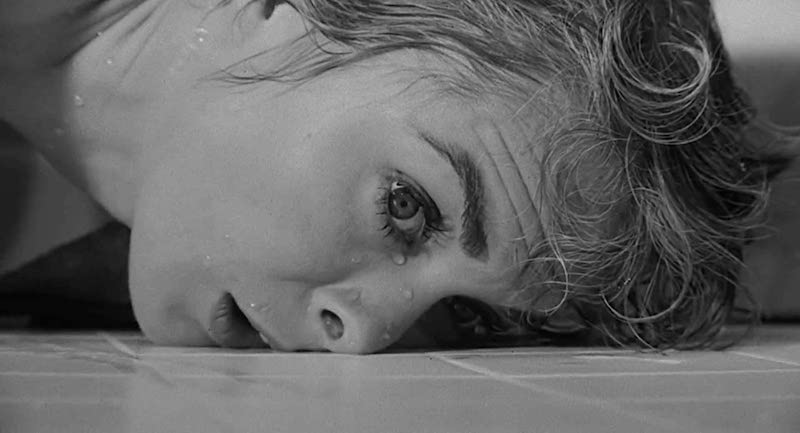
Psycho was a milestone in sound design and it celebrates its 60th anniversary this year. Kevin Hilton looks back on this most iconic of films.

Psycho is 60 years old this year. Image: IMDB.
Psycho, which celebrates its 60th anniversary this year, may be the only film with a music pattern so effective and evocative it became shorthand for a very specific state of mind. Kevin Hilton looks at how Alfred Hitchcock created the sounds of death that set the benchmark for every horror and slasher film that followed.
Over a long career Alfred Hitchcock maintained a balance between producing commercially popular thrillers, often with a comic tone, and experimenting with all the cinematic technologies and techniques available to him. Usually these were visual effects but Hitchcock also realised that music and sound could also help tell his stories or make a big impact for one of his set pieces.
While The Birds (1963), with its electronically treated sounds, is the most obvious example of the Master of Suspense pushing the sonic boundaries, Psycho (1960) shows that Hitchcock was already trying to break away from the conventions of a score that underpinned most scenes plus the occasional spot sound effect.

Director Alfred Hitchcock discusses a scene with actress Janet Leigh. Image: IMDB.
Less is more
For Psycho Hitchcock was keen to use less music and more sound effects. According to notes he made in Joseph Stefano's screenplay, which are reproduced in Stephen Rebello's 1990 book Alfred Hitchcock & the Making of Psycho, the director wanted to maximise the dramatic potential of audio. These show that the transition from the titles to the cityscape shot of Phoenix into the cheap hotel room where Marion Crane (Janet Leigh) and Sam Loomis (John Gavin) are having an afternoon assignation should have been carried by loud traffic noise, which decreases when the camera is inside.
On the current DVD release this sequence is covered with music composed by Bernard Herrmann, who first worked with the director on The Trouble with Harry (1955). Herrmann shared Hitchcock's desire for experimentation but was not ready to relinquish conventional scoring just yet. After a rough-cut of the film - without music - was screened, Hitchcock was worried that the film didn't work but Herrmann suggested a score based entirely on strings. People were sceptical but the urgent, chopping style of the violins and the bass chords of the cellos in what Herrmann produced are both alarming and compelling.
Hitchcock's ideas for sound effects were better realised later scenes. After Marion has stolen money from her boss and is driving to where Loomis lives, she is forced to pull over due to heavy rain. As she drives up to the Bates Motel there is no dramatic 'discovery', foreboding music. The torrential downpour does a good enough job of saying "don't go in there!" than even Herrmann could have.
Marion meets Norman Bates (Anthony Perkins), the young man who apparently runs the motel for his mother. The sound backgrounds for their early exchanges alternate between almost silence and light, minimal strings, which communicate Norman's nervy discomfort. Norman invites Marion to have dinner at the sinister house above the motel but when he goes up to prepare, she hears him arguing with his mother, who does not want a woman anywhere near her home or son.

Protagonist Norman Bates, played by Anthony Perkins. Image: IMDB.
Mother's voice
Hitchcock did not want to give the game away by having Perkins record Mother's lines and instead hired an aspiring actor called Paul Jasmin to perform them. In the end Mother's voice was created in post-production by sound recordists William Russell and Waldon O Watson, who edited and mixed together performances by Jasmin, Jeanette Nolan and Virginia Gregg. In some scenes the voices change from line to line and even word to word, fulfilling Hitchcock's desire to conceal the truth about Mother for as long as possible.
All this builds up to the most famous sequence in the whole film, the killing of Marion in the bathroom of her motel cabin. It is a tour de force that last only 45-seconds but took a week to shoot, with 78 camera set-ups and 52 edits. For all the brilliance of the cinematography and editing, audio is a major reason why the scene remains so powerful and shocking today.
Hitchcock resolved not to show the knife penetrating Marion's skin. Instead the sounds of the attack trick the audience into thinking they are seeing something they are not. One of the soundmen suggested stabbing a melon with a butcher's knife. To get the right texture to the sound, Hitchcock ordered that every type of melon be brought in and duly stabbed by the props man. At the end of the session he simply said "casaba". This melon, related to the honeydew, was chosen because it is not hollow and so produced a dense sound. To get a fleshy element, the sounds of a sirloin steak being stabbed were added as well.
Originally Hitchcock did not want music as part of the shower scene, which now seems bizarre given that what Bernard Herrmann scored for it, after arguing there could not be only effects, has become part of pop culture. Whenever a character in a TV programme or even someone in everyday conversation wants to convey psychopathic behaviour, they make a stabbing motion while screeching "Eee-eee-eee-eee-eee!"

Janet Leigh in Psycho. Image: IMDB.
Bass chords build up to Marion entering the bathroom but the music ends when she gets into the bath. Her unwrapping the soap is loud, making it both normal and strange, as is the noise of the shower curtain being drawn across, before the water is turned on. That noise continues alone even as, through the curtain, we see the bathroom door open and a figure enter. Marion is oblivious to this until the curtain is pulled back, with the scrape of the rings merging into the first of Herrmann's infamous stabbing stings.
Marion's screams add another dimension to the sound montage but eventually cease, with slowing bass notes taking over from the shrill violins, signifying her slowing heart. In her death throes she grasps the shower curtain, pulling it off its rings as she falls. All that is left is the running water, which gurgles as blood washes down the plughole.
Hitchcock made a jokey trailer for his first horror film but that didn't prepare cinema audiences for what they would see - and hear. People reportedly laughed, screamed or ran for the doors. With not everything shown on screen, they were almost certainly driven from their seats by Bernard Herrmann's brilliance and the sound of melons.
Tags: Audio

Comments